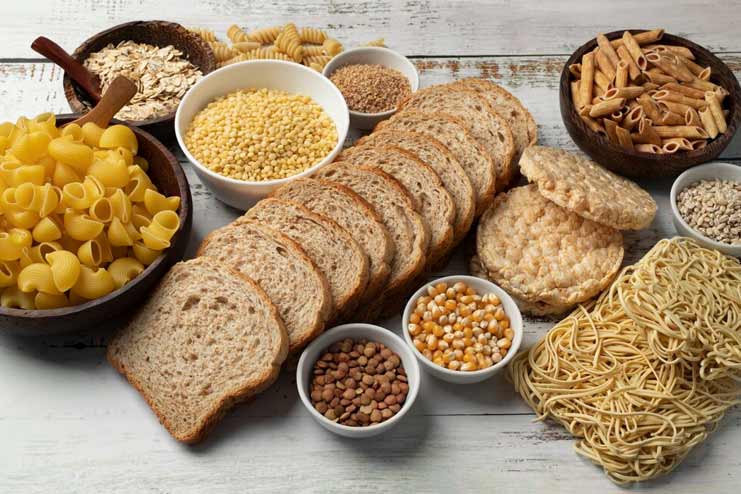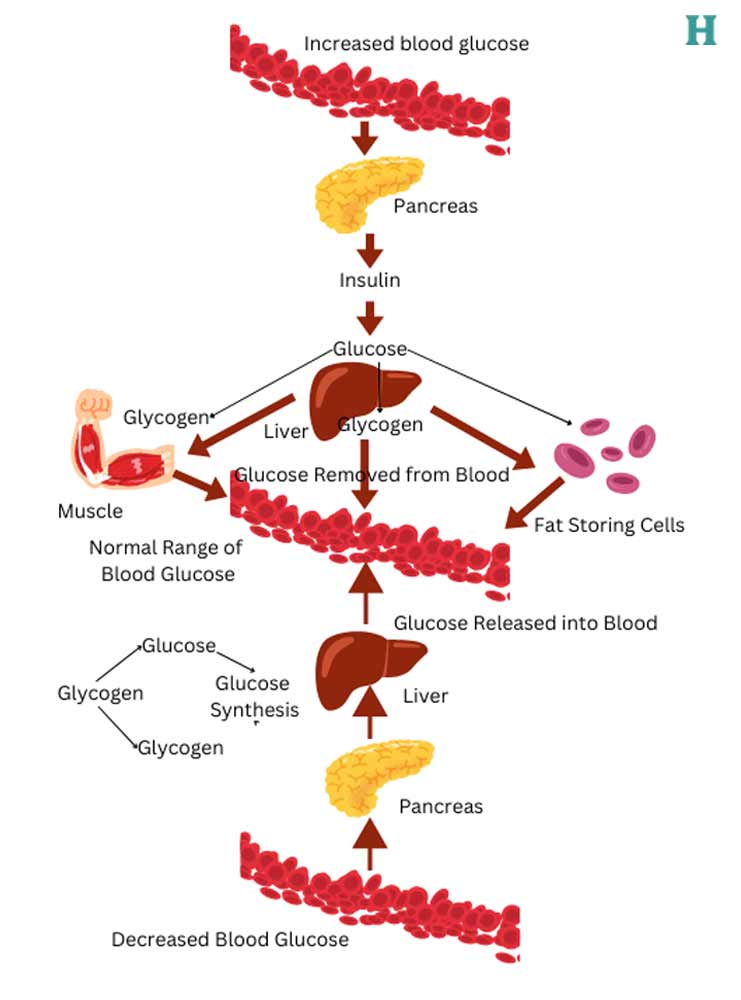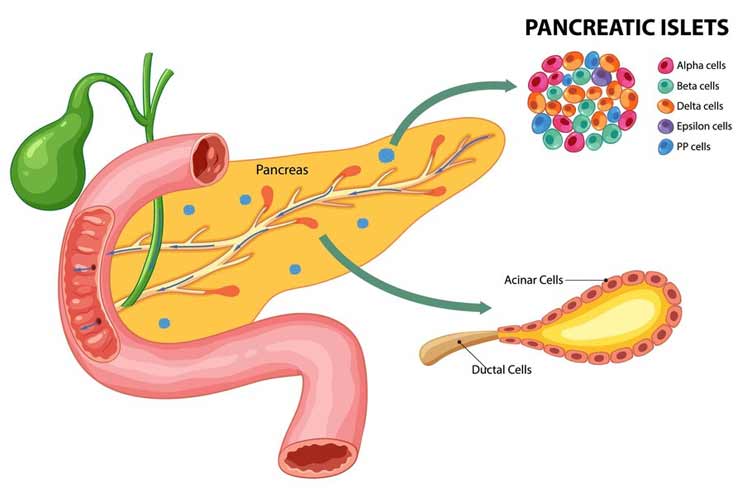Affiliate Disclaimer
Some links in this article are affiliate links. We may earn a small commission if you make a purchase through these links, at no extra cost to you. We only recommend products we find useful to our readersGlucose absorption and usage are important to maintain normal blood sugar levels and provide optimum metabolic support. Today, we will explain the basic concepts of glucose absorption, how it occurs, the mechanism the body has to regulate blood sugar, and what factors affect glucose uptake.
Once you understand how this works, you will be able to make better choices regarding your diet and lifestyle. This will positively affect your health and improve your glucose management.
Glucose – How It Works

Glucose is a simple carbohydrate and one of the primary fuels for the body. It critically helps maintain the normal functions of the body. Some of the important points regarding glucose are as follows:
- Glucose is obtained from carbohydrates in food and forms the primary fuel for the body
- When you eat, the carbohydrates in your meal are converted into glucose and enter the bloodstream
- Upon detecting glucose in the blood, your pancreas releases insulin to enable cells to absorb glucose
- Cells either use the glucose immediately to produce energy or store it for future needs
- When you consume meals heavy in carbs or are insulin resistant (i.e., your cells don’t adequately respond to the insulin), you might have excess glucose that remains in the bloodstream, which isn’t used or absorbed by the cells
- When excess glucose remains in the blood, it causes an increase in blood sugar levels, eventually leading to type 2 diabetes
Glucose Levels
When fasting, normal blood glucose levels are usually between 70 and 100 mg/dL. After meals, it increases but should be within the upper limit of 140 mg/dL. Diabetics may have different targets for specific sugar levels, as advised by their doctor.
Also, read: How Digestive Health Impacts Glucose Absorption and Diabetes
Carbohydrate Digestion and Absorption

Before nutrients are available to the body, they must first undergo digestion, in which food is broken down into basic nutrient components to be absorbed.
The digestive system may be viewed as a large food processor that uses both mechanical and chemical processes to break carbohydrates into simple sugars. These sugars are then absorbed into the blood and carried to various parts of the body to be used as energy.
Digestion of Carbohydrates
The digestion of carbohydrates starts in the mouth, where salivary amylase hydrolyzes large units of starch into smaller ones. Carbohydrate digestion primarily occurs in the small intestine due to the action of pancreatic amylases, α-amylase, and α-glucosidase. They break down the starches into monosaccharides: glucose, fructose, and galactose.
Disaccharides like sucrose, lactose, and maltose are similarly digested into their simpler sugar constituents, glucose, fructose, and galactose, respectively, by specific enzymes so that all carbohydrates can be reduced to a form that the body can absorb.
Absorption of Carbohydrates
When the carbohydrates are broken down into these simple sugars – glucose, fructose, and galactose, they can then be absorbed through the walls of the small intestine. These monosaccharides move to the liver, where they can be used for energy, stored as glycogen, or distributed to other organs depending on energy needs.
- Glucose: Used directly for energy or stored as glycogen
- Fructose: Taken up by the liver, where it becomes available to be oxidized for energy, converted into glucose, or in some cases, converted into lactic acid
- Galactose: Metabolized similar to glucose into an energy source or simply converted back into glucose by the liver
HS Recommended Article: 12 Best Glucose Meter For Keeping Your Sugar Levels In Control
Factors Affecting Carbohydrate Absorption
The glycemic index is a measure of how fast carbohydrates in foods elevate blood glucose levels. Low GI means the digestion and absorption rate is slower; your blood sugar increases slowly and gradually. High GI foods cause a drastic increase in glucose levels because they digest very fast.
Several factors can influence the rate at which carbohydrates are digested and absorbed:
- Cooking and Processing: Foods that are less processed or less cooked have a lower GI and are digested at a slower rate. For example, brown rice is lower on the GI than white rice; pasta cooked ‘al dente’ is lower on the GI compared to pasta that’s overcooked.
- Fiber: Foods with high fiber content, for instance, whole grains and legumes, decrease the digestion rate and, hence, have a low GI.
- Fat and Protein: When fat and protein are consumed with carbohydrates in a meal, digestion becomes slower, therefore lowering the GI. For instance, crackers have a GI of 70. If peanut butter is spread on crackers, the GI is 45.
- Acid Content: Foods containing acidic substances, such as vinegar or lemon, also lower the postprandial GI of a carbohydrate-containing food.
The Role of Insulin in Regulating Blood Glucose Levels

Insulin is an essential hormone secreted into the bloodstream by the pancreas, especially by the beta cells of the islets of Langerhans of the pancreas. Insulin plays a vital role in your body regulating blood glucose levels by helping to take in glucose for energy production while maintaining the balance between uptake and storage of glucose.
Blood glucose levels rise after food intake, especially carbohydrate-rich food. The pancreas secretes insulin, encouraging glucose uptake by liver, muscle, and fat cells. It lowers the blood glucose level so that sufficient energy is available in your body for immediate use, and excess glucose is stored for later use.
In fasting, this stored glucose gets released into the blood and maintains blood sugar levels with the help of insulin.
Insulin also affects fatty acid metabolism. It ensures that fat is stored in the adipose tissues. In simple words, insulin prevents the breakdown of fats when blood glucose is at an adequate level.
Insulin and Glucagon
Insulin is accompanied by another hormone, glucagon, secreted from the alpha cells of the pancreas. While insulin prevents blood glucose levels from rising too high, glucagon prevents them from dropping too low by signaling the liver to release the stored glucose. Thus, the balance between insulin and glucagon ensures that blood sugar levels are kept within a healthy range.
Conclusion
The absorption of glucose is essential for maintaining stable blood sugar levels and a healthy metabolism. This process initiates carbohydrate digestion, where digested glucose gets absorbed into the bloodstream, utilized for immediate energy needs, stored further in the liver, or redistributed among other organs for later use.
It is essential to regulate blood glucose levels with insulin, facilitating entry into cells and maintaining a delicate balance with glucagon to maintain blood sugar stability.
Poor nutrition, high glycemic index foods, and lack of exercise can reduce glucose absorption. Further insight into these mechanisms can guide proper dietary and lifestyle choices, thus improving glucose level management and long-term health.
References
- https://www.healthline.com/health/glucose
- https://sugar.ca/sugars-health/carbohydrate-digestion-and-absorption
- https://www.abbott.com/corpnewsroom/nutrition-health-and-wellness/10-tips-for-how-to-manage-diabetes.html
- https://www.fitterfly.com/blog/the-role-of-insulin-in-regulating-blood-sugar-levels
In this Article


















